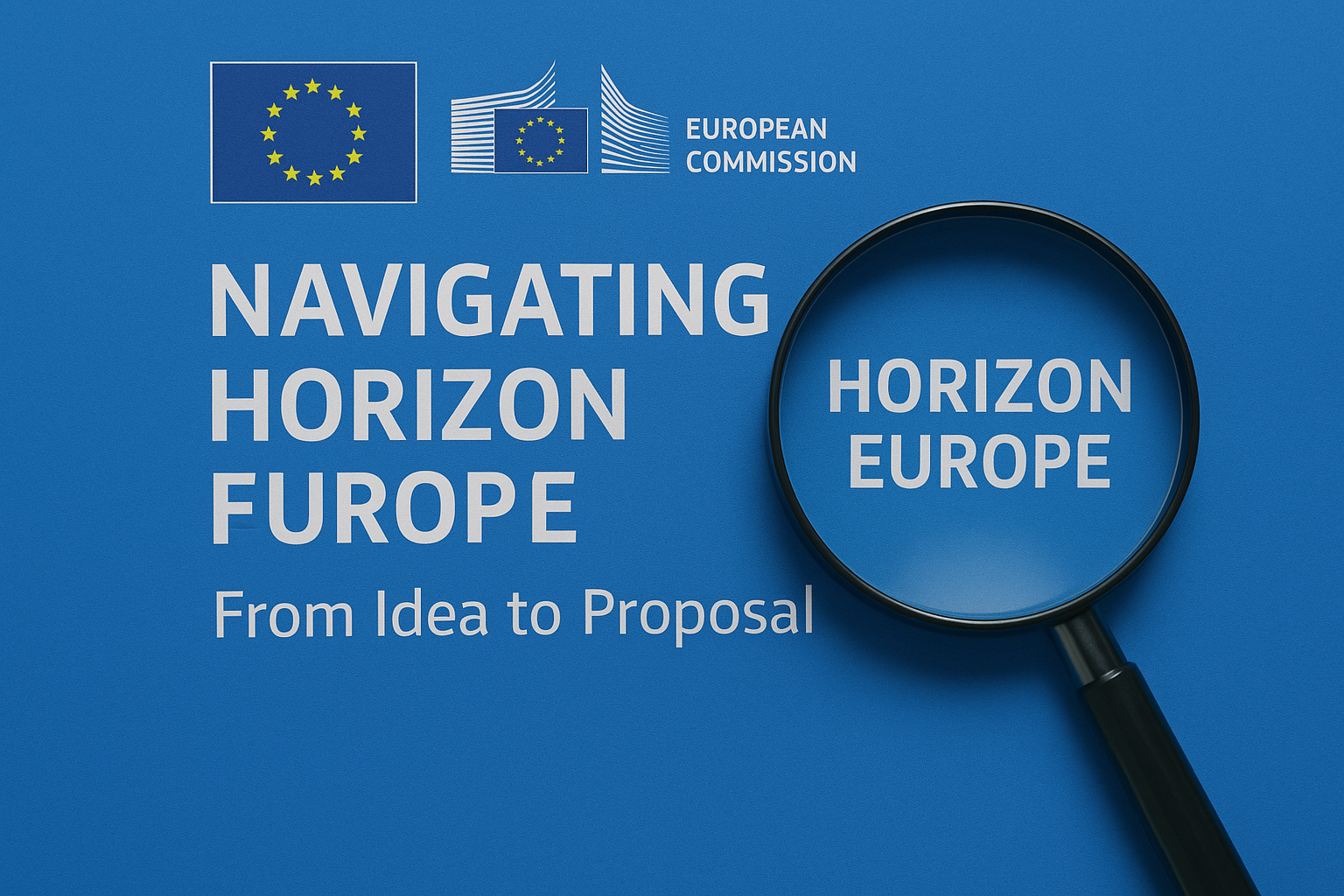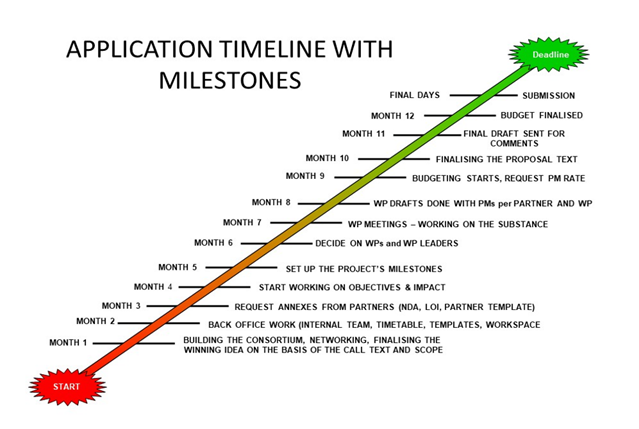Securing funding through Horizon Europe, the EU’s key research and innovation program, requires careful planning, strategic networking, and a thorough understanding of the European Commission’s priorities. As someone who has navigated this complex process several times, I’d like to share my greatest lessons learned and valuable insights on how to develop your idea into a winning proposal.
 Picture: Copilot
Picture: Copilot
Starting with a Strong Foundation
Horizon Europe proposals require not only excellent English skills but also a collaborative mindset and the ability to work in international teams. Remember that the European research networks, while international, are relatively small within specific fields – every interaction matters and contributes to your institution’s reputation (Karvonen, Mattila & Talvinen, 2024).
When you have a general interest in a field but aren’t sure how to proceed, start by consulting with research leaders at your institution. Immerse yourself in recent literature to understand cutting-edge developments and identify gaps where your expertise could make a meaningful contribution.
Understanding the Call Text – The Critical First Step
Reading and interpreting call texts requires precision and attention to detail. When examining a call, pay close attention to:
- The nature of the call: Whether it’s a Research and Innovation Action (RIA), Innovation Action (IA), Coordination and Support Action (CSA), or Pre-Commercial Procurement (PCP)
- Key strategies and directives: Which EU policies your proposal would support
- The Expected Outcomes: You should include all of them in your proposal
- Required consortium partners: Many calls specify certain types of stakeholders
- Technical Readiness Level (TRL): This defines the maturity of the technology you’re proposing to develop (European Commission, 2020)
| Maturity level | Description |
|---|
| TRL 1 | Basic principles observed |
| TRL 2 | Technology concept formulated |
| TRL 3 | Experimental proof of concept |
| TRL 4 | Technology validated in lab |
| TRL 5 | Technology validated in relevant environment (industrially relevant environment in the case of key enabling technologies) |
| TRL 6 | Technology demonstrated in relevant environment (industrially relevant environment in the case of key enabling technologies) |
| TRL 7 | System prototype demonstration in operational environment |
| TRL 8 | System complete and qualified |
| TRL 9 | Actual system proven in operational environment (competitive manufacturing in the case of key enabling technologies; or in space) |
Table 1: List of TRL levels (Karvonen, Mattila & Talvinen 2024)From Concept to Consortium
Once you’ve identified a suitable call, transform your idea into a one-page concept paper. This concise document serves as your initial pitch to potential partners and should clearly articulate your vision. Later, develop this into a more comprehensive concept paper that elaborates on the call’s background, challenges to be addressed, and your proposal’s objectives.
The timing of preparations is crucial. Ideally, you should start exploring relevant calls 10-12 months before the deadline. This gives you adequate time to find partners, refine your concept, and build a strong consortium. The application process timeline should ideally look like this picture below:
 Picture: Application timeline with milestones (Karvonen, Mattila & Talvinen 2024)
Picture: Application timeline with milestones (Karvonen, Mattila & Talvinen 2024)
Building or joining a Winning Team
Whether you’re coordinating, or joining as a partner, consortium building requires strategic thinking. For those seeking to join existing consortia, leverage your professional network, participate in brokerage events, and reach out to previous project coordinators. Having end-users you can bring along, makes you more attractive as a potential partner.
Beyond the Basics
Successful Horizon Europe proposals don’t just meet requirements—they demonstrate alignment with broader EU objectives. Stay informed about the Commission’s strategic priorities and how your work advances them. Consider participating in relevant policy discussions to gain insights into emerging focus areas. As you develop your concept and build your consortium, continuously refine your approach based on feedback and new information.
The most competitive proposals often undergo multiple revisions before submission.
By following these guidelines and starting early, you position yourself to develop a compelling proposal that demonstrates excellence, impact, and implementation quality—the three pillars on which Horizon Europe proposals are evaluated. These three pillars will be explained in the next article in this blog series.
References